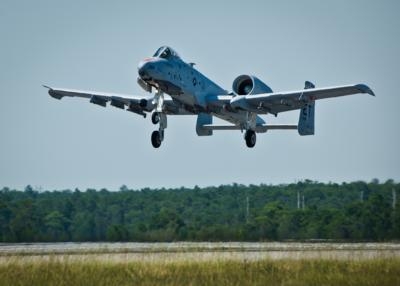Fri, Jul 06, 2012
USAF A10 Test Flight Validates Military Application
Working with the Air Force Research Laboratories (AFRL), the Air Force Alternative Fuels Certification Division (AFCD) and the 40 Flight-Test Squadron, renewable fuel company Gevo provided fuel for the first successful “alcohol-to-jet” (ATJ) fuel test flight, according to a company news release.

At 1830 hours, on June 28, the USAF flew an A-10 Thunder Bolt jet aircraft powered by a Gevo-produced blend of 50% ATJ fuel and 50% JP-8. A series of flight test maneuvers, throttle bodies, auxiliary power unit (APU) starts and engine assisted starts were performed. The A-10 is a single-seat aircraft powered by two high-bypass GE TF34 turbofan engines. A Honeywell 36-50 APU is used for engine starting and in flight emergency power generation.
“We’re extremely proud to have witnessed and contributed to the USAF’s first and only ATJ test flight,” said Chief Operating Office and President Chris Ryan. “Last week’s test flight represented an accumulation of more than 4,000 hours of hard work involving innovative testing, multiple players and years of research on everyone’s part. Together, we have proven that ATJ fuel is a technically viable and promising alternative for both military and commercial applications.”
“This is a great accomplishment for the USAF, Gevo and the biofuels industry. We’ve validated that ATJ from isobutanol is a clean burning, homegrown, drop-in jet fuel. The USAF’s flight has taken the industry one step closer to full commercialization. We remain committed to commercialization and believe we have the most economic route to deliver aviation biofuels at scale,” Ryan said.
Gevo was put on contract last year to provide the USAF 11,000 gallons of its ATJ fuel derived from isobutanol for testing by the AFCD. Gevo’s patented ATJ fuel is truly a drop-in fuel, deliberately designed to be fully compliant with aviation fuel specifications and provide equal performance, including fit-for-purpose properties.
“The AF previously ran a series of engine ground tests, using the 50/50 blend of the ATJ and JP-8,” said Jeffrey Braun, Division Chief of AFCD. “Data was then compared with previous results from JP-8 baseline testing. Engine performance parameters monitored during the testing remained unchanged when utilizing the ATJ fuel blend. We were very pleased with the technical performance of the ATJ material.”
(USAF Photo)
More News
With Testing Soon Complete, Launch Preparations Begin in Earnest Sierra Space's Dream Chaser has been put through the wringer at NASA's Glenn Armstrong Test Facility in Ohio, but w>[...]
Takeoff Roll The process whereby an aircraft is aligned with the runway centerline and the aircraft is moving with the intent to take off. For helicopters, this pertains to the act>[...]
“We’re proud of the hard work that went into receiving this validation, and it will be a welcome relief to our customers in the European Union. We couldn’t be mor>[...]
"Aircraft Spruce is pleased to announce the acquisition of the parts distribution operations of Wag-Aero. Wag-Aero was founded in the 1960’s by Dick and Bobbie Wagner in the >[...]
IDENT Feature The special feature in the Air Traffic Control Radar Beacon System (ATCRBS) equipment. It is used to immediately distinguish one displayed beacon target from other be>[...]
 Sierra Space Repositions Dream Chaser for First Mission
Sierra Space Repositions Dream Chaser for First Mission ANN's Daily Aero-Term (05.10.24): Takeoff Roll
ANN's Daily Aero-Term (05.10.24): Takeoff Roll Aero-News: Quote of the Day (05.10.24)
Aero-News: Quote of the Day (05.10.24) Aero-News: Quote of the Day (05.11.24)
Aero-News: Quote of the Day (05.11.24) ANN's Daily Aero-Term (05.11.24): IDENT Feature
ANN's Daily Aero-Term (05.11.24): IDENT Feature



